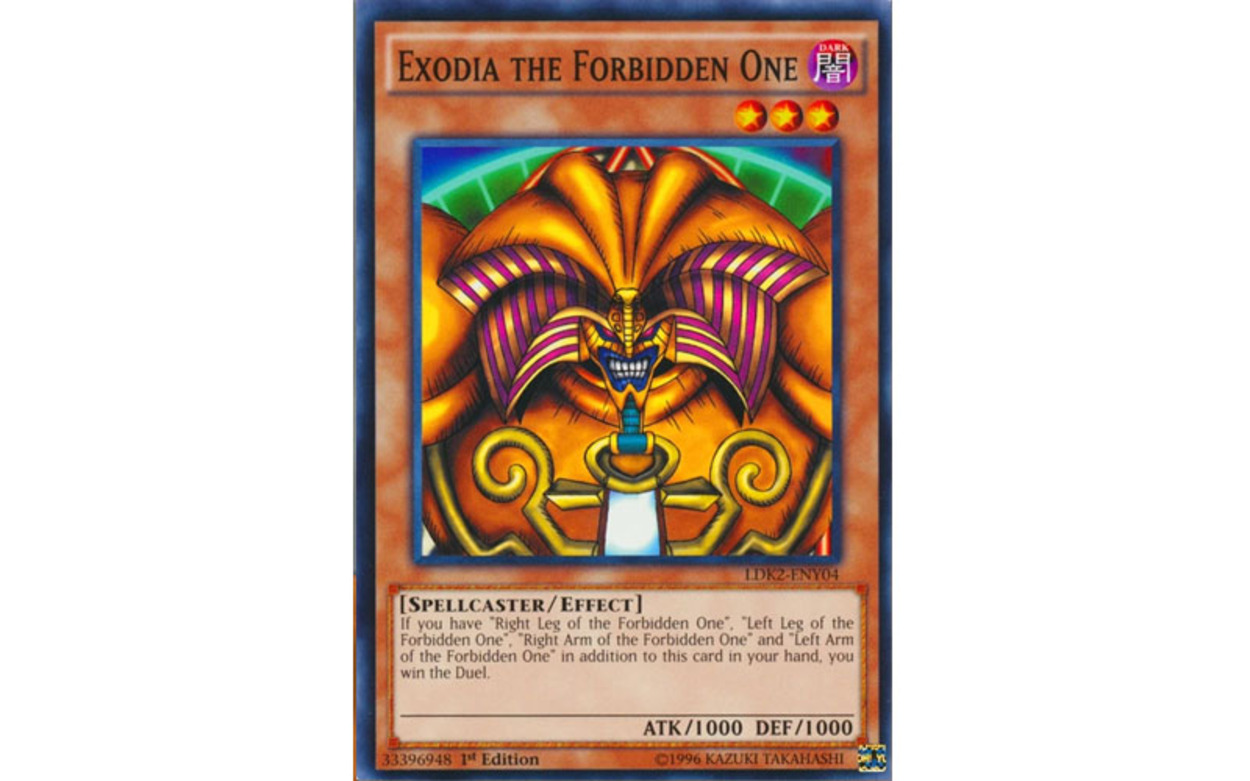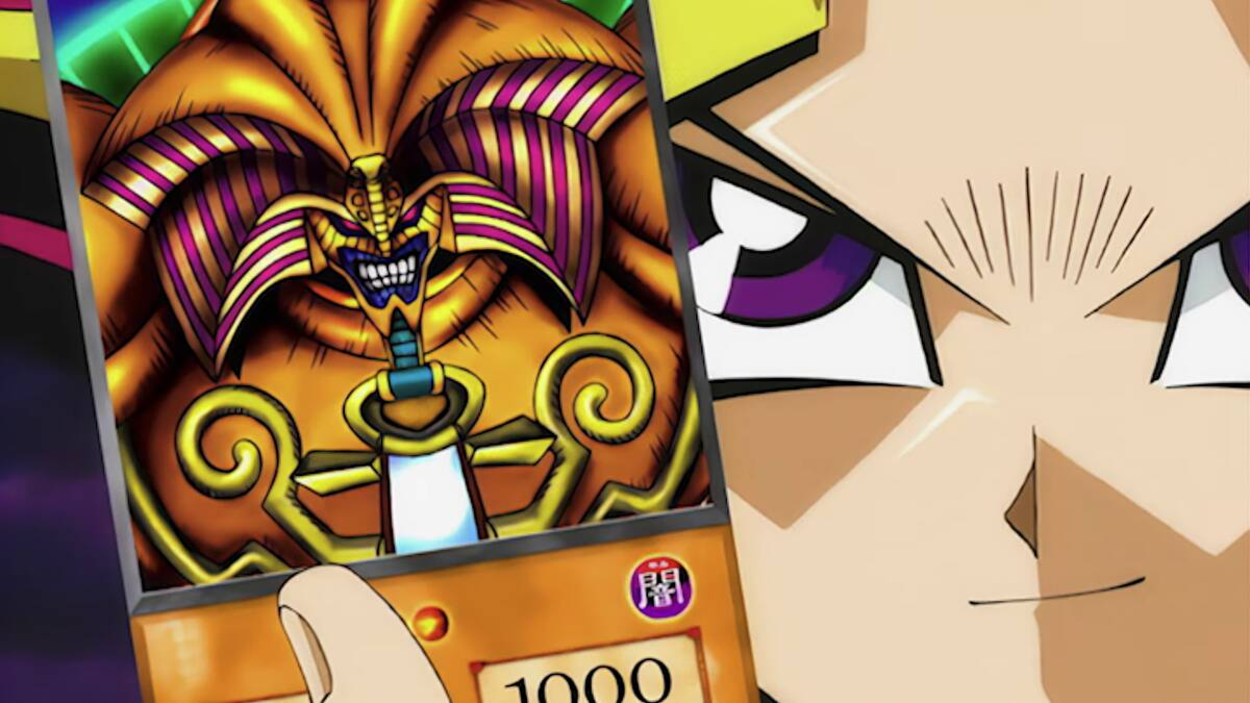Yu-Gi-Oh! The trading card game was created and released by Konami. It is based on the made-up Duel Monsters game invented by Manga artist Kazuki Takahashi, which serves as the main plot device in all of the Anime adaptations and spin-off series of the Yu-Gi-Oh! Manga franchise.
Yu-Gi-Oh! is a fantastic two-player card game that gives you lots of space to express your creativity and create a one-of-a-kind deck. Once you master the fundamentals of the game, you’ll undoubtedly have a lot of fun.
| Total Cards In A Deck | 40 to 60 |
| When Was The Game Created | 1999 |
| Who Is The Creator | Kazuki Takahashi |
What is Yu-Gi-Oh!?
Yu-Gi-Oh!, also known as Yu-Gi-Oh! Duel Monsters in Japan and the rest of Asia, is an anime based on the original Yu-Gi-Oh! manga. Studio Gallop and Nihon Ad Systems created it, while the English adaptation is distributed by the now-defunct 4Kids Entertainment.
The 224-episode series premiered in Japan on April 18, 2000, and in the United States on September 29, 2001. The series concluded on September 29, 2004 in Japan and on June 10, 2006 in the United States.
Duel Monsters, like the previous series, is primarily about the numerous battles of a high school freshman named Yugi Muto via a card game called Duel Monsters.
Nonetheless, Duel Monsters takes up where the previous series ends off, roughly equivalent to the manga series’ eighth volume.
Basics of the Game
Yu-Gi-Oh definitely has a learning phase, but the game isn’t as difficult as you might initially believe, just like chess.
You’ll soon be sparring with the best of them with some time and practice. Of course, in order to win, you must first destroy all of your opponent’s monster cards.
You’ll need to utilize several different cards in conjunction to do this. The monsters you attack won’t only be one at a time. To trap your opponent and strengthen the effects of your card, you’ll need to employ other cards.
Before diving into the rules and setup instructions, we’ll first go through the various card kinds you need to be familiar with to help you understand how the game functions.

How does the Game work
Take the top five cards from each player’s deck while they are seated across from one another.
Before playing, decks should be thoroughly shuffled. The five cards each player has should be laid out in front of them. This starts the standby phase, during which some cards may unleash their unique powers.
You can begin your primary phase once this is finished. You conduct all non-combat operations here. This can involve casting spells, laying up traps, or calling in monsters.
Additionally, monster cards can be set up for attack or defense. The defense is in a face-down position, and the offense is in an up position.
The Duel Phase
In Yu-Gi-Oh!, there are two ways to battle; you could either attack a card from the defense position or the offensive position.
The monster is destroyed if you are stronger than it is; if your attack stats are equal, both of your cards are destroyed; and if you are weaker, your card is destroyed.
Attacking a defense monster follows the same guidelines, but instead of using the attack stats, it uses the defensive stats.
Another thing to keep in mind is that making a sacrifice is necessary in order to summon higher-level monster cards.
You only have to remove a card in order to summon it, so don’t be alarmed. There will be a level assigned to each monster. Monsters up to level four can be summoned without any sacrifices, however, monsters of higher levels need you to discard a card.
The End Phase
The end phase begins when your attack is finished. During this phase of the game, a few cards may have their effects activated. Discard cards from your hand until you have six if you have more than six.
Your opponent begins their turn once you have finished your turn. When one player loses every monster they have, the game is ended.
How many types of Cards are there?

Let’s now examine a few Yu-Gi-Oh! card types, starting with the main attraction: monsters. There is a lot going on here, so allow us to explain each component of a Yu-Gi-Oh! monster card.
Trap cards, spell cards, and monster cards are the three main groups of cards in Yu-Gi-Oh!.
Monster cards come in a variety of shapes, and they also have additional characteristics that give them unique strengths and weaknesses.
Trap Cards
These are played face-down during your turn so they can come into play later when their criteria have been met.
- Standard traps lack an icon.
- Continuous traps are always present on the field and have an infinity icon.
- Only another counter trap can be activated in reaction to counter traps, which are fast and have an arrow icon.
Monster Cards
Mentioning the card’s name is necessary due to the interactions of many cards that specify a card name.
The level of a monster affects how challenging it is to summon. You can summon your larger monster by paying a tribute to one of the monsters on your field.
- Monsters of Levels 1-4 can be summoned without paying a tribute.
- Monsters of Levels 5 and 6 require one tribute.
- Monsters of Levels 7 and higher want two tributes.
Nevertheless, pay attention to any special summoning requirements that a card may state.
Each monster is a member of one of seven attributes. These only matter when the wording on a card specifies it.
Spell Cards
Your monsters can benefit from spell cards that spread other beneficial effects throughout your deck, or they might have a detrimental effect on your opponent.
In addition to summoning monsters, you’ll also be using spells and traps to help them.
Although the design of these cards is significantly simpler, there are several subsets available.
Spells can be played face-up and used right away, or they can be set and played face-down to be used at a later time.
Quick-Play Spells are able to be used as soon as it is your opponent’s turn.
Battle Rules

While on the battlefield, cards can be in one of three positions:
- Face-up Attack
- Face-up Defense
- Face-down Defense
A monster card that is facing up in attack can declare attacks and can also be attacked. The card in this spot is represented by the monster’s attack value in a combat scenario.
Monster cards cannot declare attacks when in the Face-up Defense posture, although they can still be attacked. In this position, the monster’s defense value acts as the card’s representation in a combat scenario. In this slot, monsters cannot be normally summoned unless a card effect permits it.
Monsters can be brought face-down but cannot be equipped when a monster card is in the Face-down Defense position. Otherwise, the rules for monster cards in both positions are the same. Flip the card face-up during the damage step if a face-down monster is attacked to determine the necessary damage if any.
Chain Rule
Some cards in the Yu-Gi-Oh! Trading Card Game (TCG) can be activated in response to an event and even be responded to by another card. This occurrence is known as a Chain.
When both players agree that they have finished adding to the chain, card effects do not resolve until then. At that point, each effect in the chain resolves in reverse order, starting with the last card played.
Cards can only react to other cards that have a spell speed of at least as great as their own.
Is Yu-Gi-Oh! hard to Play?
The simple answer is, yes!
Although the game is pretty challenging, it includes some wonderful teaching sets and introduction sets.
It’s a lot of fun to learn if you have someone or a few to play with. At first, the language, chronological order of events, and other elements overwhelm you but once you’ll get a hang of it, you’ll love playing this game.
It’s similar to chess in that it’s not a challenging game once you get beyond the jargon. Once you enter and engage in some practice games, everything starts to make sense. Understanding those rules and putting a plan into action are two very different tasks.
How do I create a Yu-Gi-Oh! Deck for new players?
If you’re a complete beginner, I recommend starting with a starter deck or a structure deck to gain a feel for the game.
Depending on the deck you’re trying to construct, YGO TCG can get incredibly pricey. That is why I believe it is better to begin with something simple before investing in a specialized competitive deck.
After that, if you find a deck you want to test, you can seek up deck lists online. Several YouTubers demonstrate how competitive a deck is and share a full deck list. Then you can look into card values, and sometimes you can even buy the entire deck on places like eBay.
Conclusion
- Yu-Gi-Oh! The trading card game was created and released by Konami. It is based on the made-up Duel Monsters game invented by Manga artist Kazuki Takahashi
- Yu-Gi-Oh is a fantastic two-player card game that gives you lots of space to express your creativity and create a one-of-a-kind deck.
- Although the game is pretty challenging, it includes some wonderful teaching sets and introduction sets. It’s a lot of fun to learn if you have someone or a few to play with.